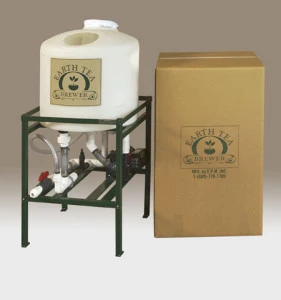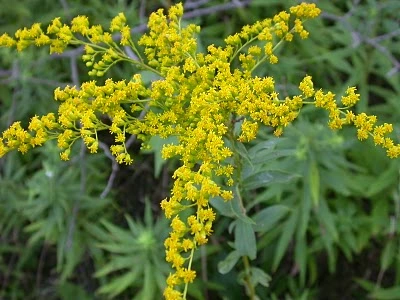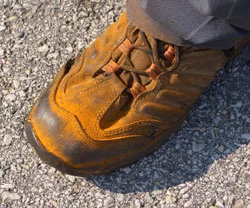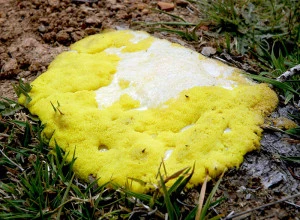
Our Blog
Use our blog as a resource of information pertaining to lawn and landscape maintenance information and services for your properties.

Use our blog as a resource of information pertaining to lawn and landscape maintenance information and services for your properties.
 One of the first things to do each season is to start with a good spring clean-up; an all-over clean up and review of your lawn & landscape (including plants, shrubs, trees, and their beds). Fallen branches, debris that has been blown in from the neighbor’s yard, and “gifts” the snow plow delivered (chunks of sod, anyone??) all need to be removed. It is a huge part of maintaining a clean, crisp, great looking landscape.
One of the first things to do each season is to start with a good spring clean-up; an all-over clean up and review of your lawn & landscape (including plants, shrubs, trees, and their beds). Fallen branches, debris that has been blown in from the neighbor’s yard, and “gifts” the snow plow delivered (chunks of sod, anyone??) all need to be removed. It is a huge part of maintaining a clean, crisp, great looking landscape.
For starters: Remove debris. Strong winds, heavy snow, and even rain can bring down tree limbs. Twigs, leaves, garbage, and other debris can be blown in from neighboring properties, and then covered up by snow- unbeknownst to you! All these things need to be picked up and removed from the property.
Break up the snow mold on the lawn: When snow lingers on the lawn for too long, especially when the large piles of snow sat for months, the grass can become infected. The best thing to do is lightly rake the area to break up the mold and promote some air flow. The new grass growth will quickly fill in. Problem solved.
Pruning: As soon as the weather begins to warm up in late winter and very early spring, plants should be uncovered (if covering took place at you fall clean up) and any dead dying or broken limbs should be pruned. Roses may also be pruned at this time. The goal is to encourage new growth, and “open it up” allowing air movement and sunlight to...

 As gardeners begin to look for natural and organic ways to promote plant productivity and health, more are turning to compost tea. By now, everyone knows about the benefits of having and using a backyard compost pile, but, you can take that idea one step further. Transform nutrient rich compost from a solid, into a liquid form. According to the University of Connecticut’s College of Agriculture and Natural Resources, there is an equivalent amount of aerobic bacteria and fungi in a 5 gal batch of aerated tea a there is in about 40 cubic yards of regular compost. Powerful Stuff!
As gardeners begin to look for natural and organic ways to promote plant productivity and health, more are turning to compost tea. By now, everyone knows about the benefits of having and using a backyard compost pile, but, you can take that idea one step further. Transform nutrient rich compost from a solid, into a liquid form. According to the University of Connecticut’s College of Agriculture and Natural Resources, there is an equivalent amount of aerobic bacteria and fungi in a 5 gal batch of aerated tea a there is in about 40 cubic yards of regular compost. Powerful Stuff!
Understand that this is not simply a shovel full of compost placed in a bucket adding water and letting the mix step for a couple days. Although, this is not a bad idea, it is merely a watery compost extract. Compost tea is actually brewed under conditions referred to as “actively aerated compost tea” (AACT). When this brewed compost tea is added to plants, it can boost overall plant heath, and can be more able to resist pests and disease.
How is compost tea made? Here at Beautiful Blooms, we have a 25 gallon tea brewer made specifically for this purpose. Here is the basic idea: First, the compost is placed in a large, fine meshed “tea bag”. Next, the tea gets aerated, as well as mixed and stirred at the same time. (Remember, the tea can only be as...
 It is mid-September. Are your eyes itchy? Is your nose runny? Do you sneeze worse when you step outside? Chances are, you are suffering from hay fever and the culprit is ragweed- NOT Goldenrod. Goldenrod – that tall late summer/early fall blooming perennial with yellow flowers- often is unfairly blamed for causing hay fever. That’s too bad, because goldenrod is a wonderful addition to the back of any perennial border. So, why does goldenrod get such a bad rep? Well, both ragweed and goldenrod bloom at the same time, and when people see the masses of bright golden flowers, they automatically assume that its pollen is the source of their irritations. Actually, goldenrod pollen is too heavy and sticky to be blown far from the flowers, which is why it is so brightly colored. Goldenrod must need a way to attract insects who are its main pollinators.
It is mid-September. Are your eyes itchy? Is your nose runny? Do you sneeze worse when you step outside? Chances are, you are suffering from hay fever and the culprit is ragweed- NOT Goldenrod. Goldenrod – that tall late summer/early fall blooming perennial with yellow flowers- often is unfairly blamed for causing hay fever. That’s too bad, because goldenrod is a wonderful addition to the back of any perennial border. So, why does goldenrod get such a bad rep? Well, both ragweed and goldenrod bloom at the same time, and when people see the masses of bright golden flowers, they automatically assume that its pollen is the source of their irritations. Actually, goldenrod pollen is too heavy and sticky to be blown far from the flowers, which is why it is so brightly colored. Goldenrod must need a way to attract insects who are its main pollinators.
Ragweed has small, fairly unremarkable flowers that unleash abundant amounts of pollen freely into the wind. The only way you and I know that ragweed is blooming at all is through our allergic reactions to the pollen. Thousands of tiny flowers on each plant result in the release of approximately one billion grains of pollen. This happens usually during the mid-morning hours as dew dries and humidity decrease. It is estimated that up to 1 million tons of ragweed pollen is produced each year in North America...
 It is time to think about your landscape management needs for the coming fall season and next year. In just a few short weeks, we will begin fall cleanup activities! Cleaning up the garden in the fall is an important part of the overall maintenance of your landscape and should not be overlooked. On the other hand, if taking a drive to enjoy the fall color and inviting friends over to watch the football game is how you would rather enjoy the fall season then call Beautiful Blooms now! We are ready to take care of all of your lawn and garden clean-up chores. As you already know, we provide quality service at a reasonable price. We are happy to work with you to tailor a program that suits your needs and your budget.
It is time to think about your landscape management needs for the coming fall season and next year. In just a few short weeks, we will begin fall cleanup activities! Cleaning up the garden in the fall is an important part of the overall maintenance of your landscape and should not be overlooked. On the other hand, if taking a drive to enjoy the fall color and inviting friends over to watch the football game is how you would rather enjoy the fall season then call Beautiful Blooms now! We are ready to take care of all of your lawn and garden clean-up chores. As you already know, we provide quality service at a reasonable price. We are happy to work with you to tailor a program that suits your needs and your budget.
Listed below is an informational update and summary of all the services offered by Beautiful Blooms. Please look it over and indicate if you are interested in any additional services for this fall or the coming 2014 season. Our schedule fills up quickly so if you are interested in 2013 Fall Services, your earliest response will allow us to offer you the best possible service.
Curbside Leaf Pickup
 Do you need your leaves hauled to the city compost pile, but don’t really want to spend every spare moment you have this fall filling and cramming all those little bags into the back of the family car? Let us come and take them away for you. We use a high powered debris vacuum system to shred...
Do you need your leaves hauled to the city compost pile, but don’t really want to spend every spare moment you have this fall filling and cramming all those little bags into the back of the family car? Let us come and take them away for you. We use a high powered debris vacuum system to shred...
Fall: My Favorite Season & Great Grass Growing Weather
—Mike Harrington
Fall is my favorite time of the entire year. Cooler nights and decreasing daytime temperatures are a big factor in my enjoyment of this season. I love being outside on fall evenings because you can feel the temperature changes every night. Rainfall events also happen more frequently during the fall as compared to the normal July and August weather and I thoroughly enjoy storms. Turf-grass has been a passion for me for over 2 decades now. I am not sure it is fair to compare myself to turf-grass as kindred spirits, but just as I love the weather and the season, so does turf-grass.
The heat and humidity have dropped allowing turf-grass to thrive in cooler temperatures. The rainfall helps to keep the grass growing and it definitely aids in germination of any new seed that has been planted. These conditions make the fall the best time of year to try and repair a lawn that has been damaged from neglect, overuse, or just summer stress. The first step in lawn repair and recovery is aeration.
Aeration is best performed in the fall because it helps stressed turf to recover from the summer’s heat and humidity. It opens up the soil allowing better nutrient and moisture uptake. Aeration relieves compaction that forms from use of the lawn. It also helps to relieve the hardpan areas that might develop from the long periods of time with a lack of moisture. Not only does aeration benefit the...
Is your lawn chemical dependent? For over half a century, the normal and accepted way to maintain a home lawn was to apply fertilizer, pesticides, water, and regularly mow it….and collect the clippings of course. In the past decade this mantra has been evolving.
Two items on this list seem to be easily understood and adapted by the majority of the public.
First to go was collecting your clippings.
This seemed to be perhaps the most painless step in converting the general public to a more earth friendly way of caring for their lawn—in part because the municipalities stopped collecting most green waste.
Depending on the part of the country you live in, watering restrictions can be severe. Here in Wisconsin we typically only see restrictions during extended periods with little to no rain. Even these restrictions are quite mild—usually every other day watering is allowed. Compare that with west Texas where outdoor watering is limited to 2 hours per MONTH.
Maintaining a tightly manicured lawn requires a lot of inputs. Can we have our cake and eat it too? That is really the question. Most people are not willing to give up all of their lawn space, and it is justifiably useful to a degree. If you have pets, children, or simply enjoy being outside in your yard lawn is a necessary part of your landscape. To decrease the amount of synthetic fertilizer and pesticides applied to your...
 Not surprising…our weather conditions have been prime for rust fungus to form on lawns this year. Most commonly, rust is noticed during periods of slow growth. Our lawns typically go dormant during the summer months due to the lack of rain and also heat. This summer is the first in a very long time that we have had regular rain fall through the entire summer months and also cool temperatures. For the most part, non-irrigated lawns have kept their lovely green color all season. Though, the rate of growth has slowed down.
Not surprising…our weather conditions have been prime for rust fungus to form on lawns this year. Most commonly, rust is noticed during periods of slow growth. Our lawns typically go dormant during the summer months due to the lack of rain and also heat. This summer is the first in a very long time that we have had regular rain fall through the entire summer months and also cool temperatures. For the most part, non-irrigated lawns have kept their lovely green color all season. Though, the rate of growth has slowed down.
Rust is noticed during periods of slow growth because the rust is not being physically removed by regular mowing at a fast rate as it would be if the lawn were growing rapidly. Therefore, the rust has an opportunity to proliferate on the slower growing blade of grass.
Once conditions are right for the grass to begin growing more rapidly, the rust ‘problem’ will mitigate itself without any additional inputs. Conditions can be related to weather or nutrients.
Some may advise that an application of fertilizer will take care of the rust problem. And while it is true that applying fertilizer will probably increase the rate of growth, applying fertilizer may not be the appropriate thing to do. If the soil is holding enough nutrients already, then these additional nutrients may just runoff and pollute our environment. Also, given that it is the middle of summer and weather...
Disease seen in some lawns
Earlier this week, we were called to a home in Pewaukee because of some suspicious looking dead patches. At first, we thought it was an overspray of roundup. Once we saw the area in person we soon realized that it was a fungal disease.
How can we tell the difference? With a fungal disease there are various distinct markings on the leaf blades and also if inspected early in the day we can often see mycelium (fuzzy stuff). Each sort of plant disease has very distinct characteristics in how they look either to the naked eye, or under a microscope.
What should be done? On a residential lawn, usually nothing. As soon as conditions change, the disease progression will stop. The damage is often very minor and the lawn will recover just fine on its own. One of the reasons why the damage is minor is because your lawn is created from several types of grass. Often a disease only attacks one type and the others are unscathed.
In other scenarios, such as a golf course, where there are monocultures of grasses planted, pristine conditions are demanded and because of the way the turf is maintained overall, the application of a fungicide may be necessary to halt its progression.
For a home lawn situation however, it is not prudent to apply fungicides for a problem that is really quite temporary, likely to pass with a change in weather, and not cause significant damage. If there is...
What about all this rain!?
Too little, too much….either can be devastating! There is NOTHING we can do to control the weather but we can react to the effects that it has on our landscapes. To do this most effectively and efficiently requires a partnership between you and Beautiful Blooms. Please be observant when enjoying your landscapes and pass any notes/concerns on to us—we will respond as best that we are able to.
Things to observe, specifically—
“Dog Vomit Fungus”-Slime Mold
 In spring, when you have cleaned the yard of all its winter debris and laid down new hardwood mulch on all of your beds. Some time has passed and as you walk around enjoying your season-ready yard, you notice something sitting on top of your mulch! It is not very big, but it is very ugly, and quite frankly, it looks like your dog has puked up something that didn’t quite agree with him. What you are looking at is called, in gardening circles, Dog Vomit Fungus (slime mold). No really, that’s what it is called and it is more common that you’d think! Typically, spring weather conditions are perfect for this nasty looking fungus to appear in your mulched landscape beds.
In spring, when you have cleaned the yard of all its winter debris and laid down new hardwood mulch on all of your beds. Some time has passed and as you walk around enjoying your season-ready yard, you notice something sitting on top of your mulch! It is not very big, but it is very ugly, and quite frankly, it looks like your dog has puked up something that didn’t quite agree with him. What you are looking at is called, in gardening circles, Dog Vomit Fungus (slime mold). No really, that’s what it is called and it is more common that you’d think! Typically, spring weather conditions are perfect for this nasty looking fungus to appear in your mulched landscape beds.
 Why is it showing up in JULY? Lately, the weather has been very similar to our spring time conditions, cool and damp.
Why is it showing up in JULY? Lately, the weather has been very similar to our spring time conditions, cool and damp.
We have been getting calls reporting a strange slimy mess in landscape beds- almost like someone threw up in their gardens!!! It is a type of mushroom? Is it going to harm my shrubs or other landscape plant material?
Let me ease your concerns…
This isn’t a mushroom at all. It is a mold- a slime mold! It is actually more closely related to a single-celled organism. Slime mold has 2 life stages; First, “plasmodium” stage- it is just like a huge amoeba that creeps and moves like a blob over dead wood (including mulch) and other materials, engulfing,...
Just complete the form below to get a pricing quote.
